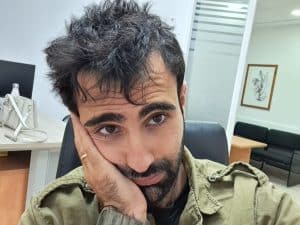The name “Sepharad” appears only once in the Bible. The Book of Obadiah says “the exiles from Jerusalem who are in Sepharad.” The exact location of the biblical reference is unknown, but tradition holds that it is Spain. The Jewish community in Spain is 1,500 years old. Little is known of the first 500 years of that settlement, but the following millennium until the Spanish Inquisition of 1492 has been well studied.
The Jewish community in Spain in the 12th and 13th centuries was the largest, wealthiest and most enlightened community in the world. At the time, there were an estimated 1.5 million Jews in the entire world – in Europe, Asia and North Africa, including about 20,000 in Poland and about 600,000, or more than one-third, in Spain.
Professor Yom Tov Assis said that to understand the proportion of the Spanish Jewish community we must compare it to American Jewry, today’s largest Jewish community. However, today there is also the State of Israel. How did the Spanish Jewish community become the largest, wealthiest and most enlightened?
For many years, Cordoba, Grenada, Seville in southern Spain were under Arab rule, while the north was held by Christians with intermittent variations. And then in the 10th century, the enlightened Abd al-Rahman III became the emir in the then-capital Cordoba and ruled for fifty years. He sent messengers to invite educated men from all the lands of Islam to come to Spain, offering money, houses and even land. The call was answered and many educated men came to Spain from Bukhara, Iraq, Syria, North Africa and from the entire Muslim world. The emir’s Jewish vizier Hasdai Ibn Shaprut also served as minister of trade, but in many ways he was de facto foreign minister. Since he did business with many countries, the emir called upon him to mediate and settle disputes also with Christian countries. What the emir did with educated Muslims, Ibn Shaprut did with Jews: He sent messengers and wrote letters of invitation to those interested in teaching or studying to come to Spain. So Jews from Babel, North Africa and Europe came to Spain and were received with respect, given comfortable living conditions and complete freedom. The Jewish population increased and Spain became the center of the Jewish world at the time.
Spanish Jewry had several distinguishing characteristics, of which I will discuss three.
Integration of science and faith: A person could be religious, even a rabbi, hold any religious office, but could also include general studies – chemistry, physics, philosophy, astronomy, medicine and more. This was not accepted practice in Eastern European institutions of Jewish learning nor is it accepted today in Ashkenazi ultra-Orthodox yeshivas.
Spanish Jewry stood out for its integration of faith. Influential Torah scholar Maimonides, considered the greatest rabbi for centuries and also revered by the Ashkenazi Jewish world, was both a physician and a philosopher. He was a follower of the Greek philosopher Aristotle with one notable exception: Aristotle believed that the world had always existed while Maimonides, in keeping with the Jewish perspective, believed that the world was created by God.
Another example of this integration was the powerful positions Jews held in the courts of the Arab kings. The Christian kings in the north also employed Jews in high-powered positions, such as the statesman Don Isaac Abravanel who served as minister of the treasury.
Rabbi Samuel HaNagid of Grenada was a rabbi studying the Talmudic texts, Gemara and Mishnah, and wrote a guide to teaching Talmud. Nonetheless, in modern terminology, he also served as prime minister, finance minister, foreign minister and defense minister. He was the chief of staff, heading the Moorish king of Grenada’s army, going to war every year against rebellious princes. He lost an eye in battle and once almost drowned crossing a river on horseback, but he led the army into battle. He was also a poet, naturally writing his poetry in Hebrew.
This openness was Spanish Jewry’s most prominent characteristic. There was no obstacle to integrating philosophy, anatomy, physics, astronomy and medicine with faith and religion. Wherever Jews were later expelled from Spain, – Turkey, Greece, Yugoslavia, North Africa and other locales, that was how they behaved. If now a Sephardic rabbi argues against studying philosophy, astronomy or the use of the Internet, this is in direct contradiction to the Sephardic legacy.
Love of the Bible and the Hebrew language: Grammar, the rules of the Hebrew language, was born in Spain. The language underwent a revival there. In a Portuguese archive I found a certificate with a wax seal signed by the Portuguese King John II in which he orders the astronomer Abraham Zacuto to be given 300 dinars. Rabbi Abraham Zacuto was the king’s astronomer and an expert in the stars. The king also used him as an astrologer. Every ship’s captain had a map of the heavens that he used for maritime navigation. Zacuto was the worldrenowned expert in maritime navigation. On the parchment signed by the king, Zacuto writes a receipt in archaic Hebrew “I, Abraham Zacuto the astronomer, from the king…” signing in Hebrew for the king of Portugal. In the archive in Barcelona, I also found documents in Hebrew: official certificates on matters of trade, commerce and real estate.
Moderation: Spanish Jewry chose the middle road, no extremism, not for good and not for bad, not in food and not in drink, that boing the central principle of Maimonides. From a halakhic perspective, to alleviate, not aggravate. If there is doubt and it is possible to help – then alleviate. Prefer the teachings of the moderate sage Hillel over the strict sage Shammai. The Sephardic rabbis lean toward Hillel because, as the Bible states: “Her ways are ways of pleasantness, and all her paths are peace . She is a tree of life to those who grasp her, and whoever holds on to her is happy .” (Proverbs 3:17-18)
The inquisition and expulsion
What happened to this large, wealthy and vibrant Jewish community? The Christian church could not deal with the Jewish presence and began persecuting the community. The most important date in the history of Spanish Jewry is 1391, a century before the expulsion. In that year there were pogroms against the Jews and historians estimate that one-third of the community was destroyed. It began in Seville where sailors disembarking from boats fell upon the Jews. The churches preached against the Jews. In addition, they forced tens of thousands of Jews to convert to Christianity, entering synagogues with cudgels and truncheons and forcing the congregants to convert. This created the Marrano Jews, who converted for public purposes but upheld Jewish commandments in secret. There are minutes of trials of Jews caught during the Inquisition. The means of interrogation were extremely cruel, directed not at Jews but at those who converted but practiced Judaism clandestinely.
Across the Spanish kingdom’s realm, Jews who had ostensibly converted but acted as Jews in secret were the targets of the Inquisition – Portugal, Peru, Mexico, Angola. There are instructions on how to prepare the unleavened matzah for Passover without alerting Christian neighbors. There are records of a trial in which a servant testifies that her master was always sick on Saturdays, never working in his store. On Saturday nights, the servant reported, the family sits in the dark and one of the children goes outside to check if three stars are visible in the night skies. She says she doesn’t know why they do this, but they do. The non-Jewish servant tells stories in the court that prove the family did not convert to Christianity but continues to uphold Jewish law. Thousands of such Jews were punished, first with the confiscation of all their property, sentenced to lashings and to prison terms of 10, 15 and 20 years. Those who were caught again were sentenced to be burned at the stake. I read a document by residents of Palma de Majorca complaining that the stake for burning the Jews was too close to their homes and they couldn’t stand the stench and smoke. The residents petitioned to have the stake moved further from their residences.
That was the fate of Spanish Jewry at that time: Tens of thousands and maybe more were murdered; the same number of Jews were forced to convert. And the rest – about 200,000 – were expelled in 1492. The year 1492 was recorded as the most important year in the history of the Jews, the Arabs and the world: The Jews were expelled from Spain, the Moor rule of Spain came to an end and Columbus set out from Spain for America.
Why were the Jews expelled from Spain? The order of King Ferdinand and Queen Isabel explains the expulsion. Those remaining Jews prevent the new Christians, i.e., the converted Jews, from remaining Christian. They teach the new Christians the teachings of Moses, the Jewish customs, and the Jewish commandments, and do not let them live as proper Christians. Therefore, it was necessary to expel the Jews. Those to be expelled were given a few months to prepare, but they were not allowed to take possessions with them.
The Jews were expelled from Spain. Some went to Italy, most went through Portugal and dispersed later. At that time, after the Crusader wars, Turkey became Spain’s rival and they had hostile relations. Turkey found the Jews, persecuted by its enemy, to be allies. Sultan Bayezid II sent a proclamation to his entire kingdom allowing the Jews to enter under the auspices of the Turkish regime and permitting them to engage in commerce. Thus, the Jewish community flourished under Ottoman rule.
Spanish Jewry left a great, beautiful and interesting legacy in Spain itself and in the lands of its dispersal after the expulsion. Important and interesting works of art, music and literature came from this Golden Age. These three fundamental characteristics of Spanish Jewry continued in the lands to which they were expelled, and I hope will continue and become characteristics of the entire Jewish people: love of the Bible, the Hebrew language and the land of Israel, moderation and the middle road.
Yitzhak Navon, 5th President of Israel









